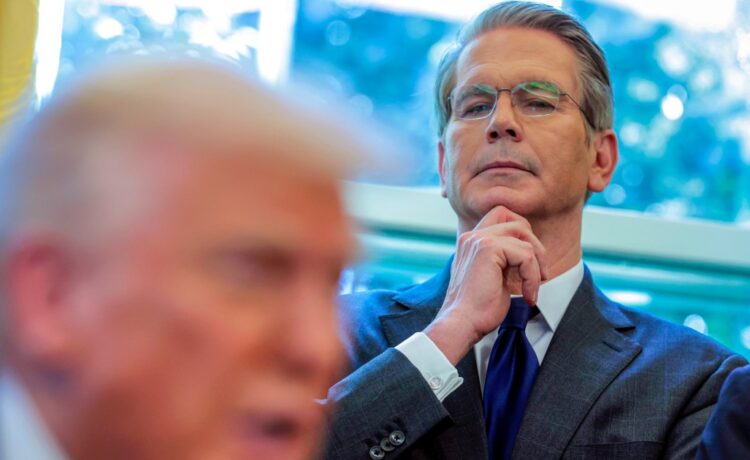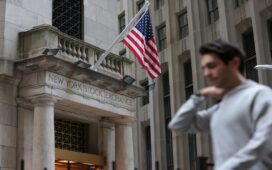The Trump administration’s latest efforts to soften its trade stance amid a market rebellion are running into a harsh reality: Other nations do not yet appear willing to negotiate.
On Wednesday, Treasury Secretary Scott Bessent reiterated remarks he’d made to investors at a private conference Tuesday that the tariffs standoff with China was “unsustainable.”
But he said that any de-escalation would have to be mutual — and had not yet been initiated by the White House.
In response, an official with China’s U.S. embassy accused the U.S. of continuing to mistreat it.
“Our doors are open if the U.S. wants to talk,” the spokesperson said in a statement Wednesday. “If a negotiated solution is what the U.S. truly wants, it should stop threatening and blackmailing China and seek dialogue based on equality, respect and mutual benefit. To keep asking for a deal while exerting extreme pressure is not the right way to deal with China and simply will not work.”
Meanwhile, a European Union representative told The Wall Street Journal that it was not going to abandon its value-added tax or the agricultural subsidies its nations provide to the regions farmers.
The official also posted to X that the E.U. was seeking to strengthen and expand ties to other nations, indicating it was positioning itself as a counter-weight to the instability set off by the Trump administration.
Major stock indexes, as well as bond markets, saw earlier gains evaporate Wednesday as the day wore on and investors grasped that the rest of the world was not shifting its hard-line posture.
Indeed, the reactions from China and the E.U. may be a response to a sense that it now has leverage. Despite weeks of market turmoil, the White House’s new, softer stance appeared to be in response to the threat of physical shortages on U.S. retail shelves — an experience Trump lived through during his first term as the pandemic unfolded.
According to a person familiar with the White House’s thinking, some companies have stated the tariff rates on imported goods are now so high that they have effectively become embargoes, and the firms have simply stopped bringing in goods in response.
The White House was particularly concerned about shortages of products around the holidays, the person said. The Christmas ordering cycle is starting and July Fourth is coming up where retailers might not have the summer products, like beach chairs, umbrellas, grills, fireworks or light-up trinkets.
Bessent told a Washington, D.C., conference that “more than 100 countries” have now approached the U.S. to address trade imbalances, though he reasserted a key Trump talking point that the rest of the world, as well as past U.S. presidents, were responsible for harming America’s heartland.
“For decades, successive administrations relied on faulty assumptions that our trading partners would implement policies that would drive a balanced global economy,” Bessent said. “Instead, we face the stark reality of large and persistent U.S. deficits as a result of an unfair trading system.”
He continued: “Intentional policy choices by other countries have hollowed out America’s manufacturing sector and undermined our critical supply chains, putting our national and economic security at risk.”
Bessent’s remarks initially sent markets higher. But after Bessent, and later, White House press secretary Karoline Leavitt, said there would be no unilateral reduction in tariffs against China, stocks pared gains significantly, while U.S. government bonds sold off after an earlier rally.
Trump changes-of-mind have been a constant of his second term, and there was nothing to suggest that the latest evolution of his thinking would be final. He was set to make additional remarks Wednesday evening.
“With investor concerns growing, U.S. President Trump demonstrated the art of the retreat,” Paul Donovan, chief economist of UBS Global Wealth Management, said in a note to clients Wednesday.
Donovan added: “The erratic threaten-retreat-threaten-retreat cycle has economic consequences. The uncertainty this causes may impact consumer and business decision-making.”




